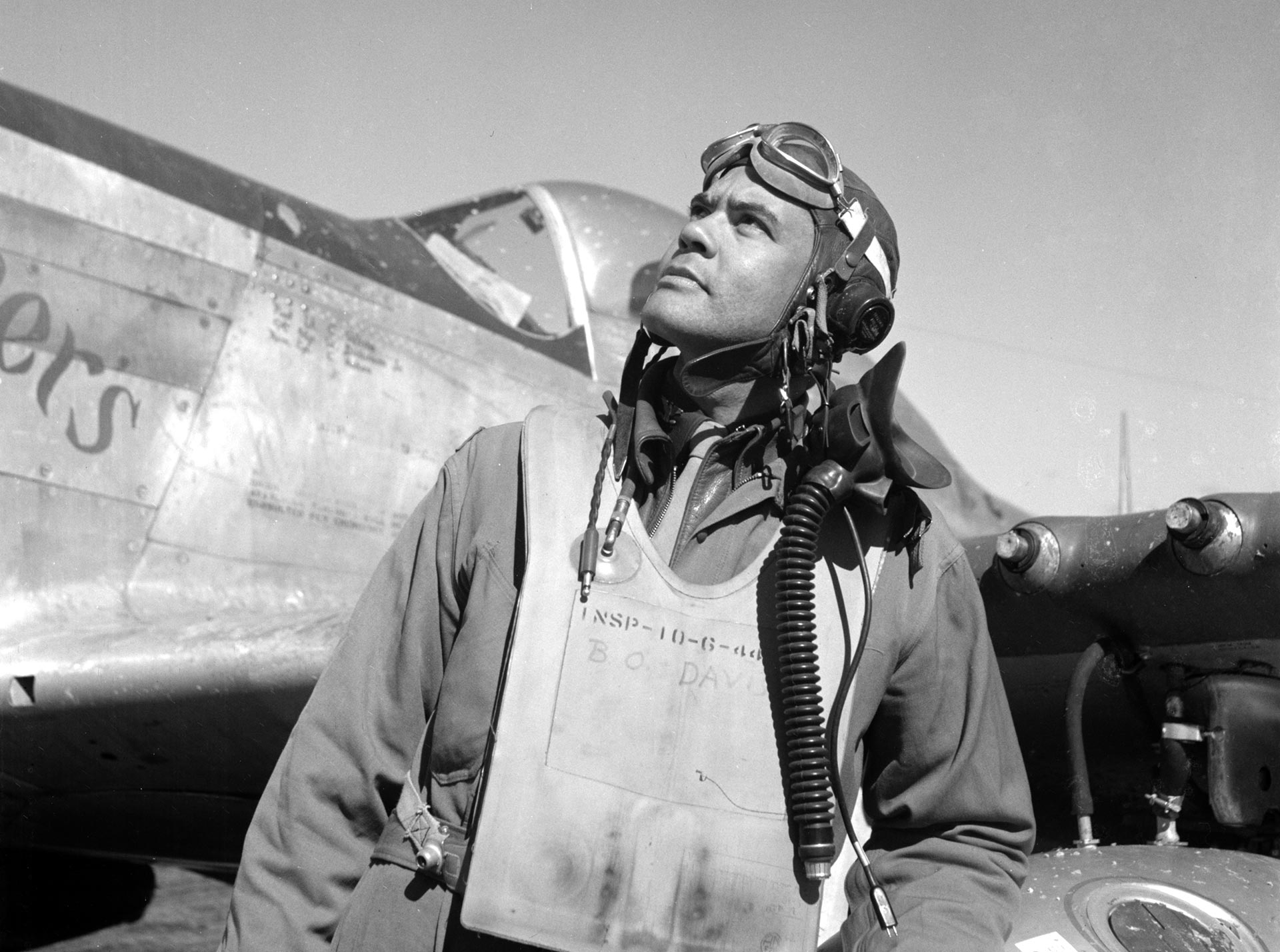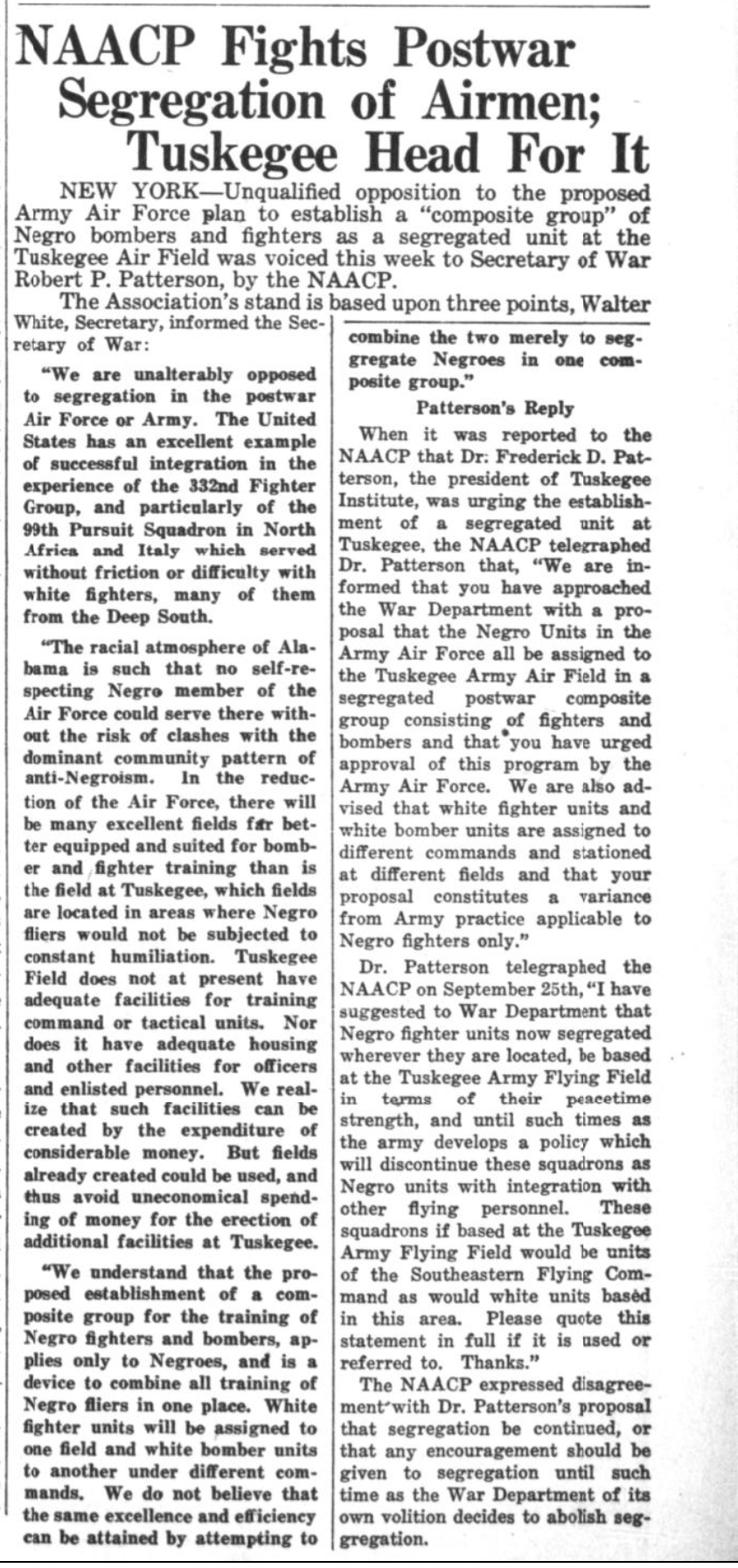Some of the original Tuskegee Airmen would move on to larger roles in the newly desegregated military. Benjamin O. Davis Jr. would become the first Black general in the new U.S. Air Force, George S. "Sparky" Roberts became the first Black commander of the Air Force, and Daniel "Chappie" James Jr., became the nation's first Black four-star general in 1975.
The Tuskegee Airmen:
The Fight for Military Desegregation
LEGACY
After the war ended, the Tuskegee Airmen quickly gained publicity in America. Their success as pilots transformed the new structure of the Air Force as many of them became instructors for not just African Americans, but for all races as well. Their success allowed Bill Clinton to establish a historic site in Tuskegee, Alabama, solely commemorating the Tuskegee Airmen.

Benjamin Oliver Davis Jr. at an airbase in Rametti, Italy: Courtesy of Library of Congress, 1945
Wings For This Man (1945) Tuskegee Airmen: Courtesy of Internet Archives
.
"We are unalterably opposed to segregation in the postwar Air Force or Army. The United States has an excellent example of successful integration in the experience of the 332nd Fighter Group, and particularly of the 99th Pursuit Squadron in North Africa and Italy which served without friction or difficulty with white fighters, many of them from the Deep South."
~ Walter White, leader of the NAACP

"NAACP Fights Postwar Segregation of Airmen; Tuskegee Head For It,"Minneapolis Spokesman: Courtesy of Library of Congress, 1945